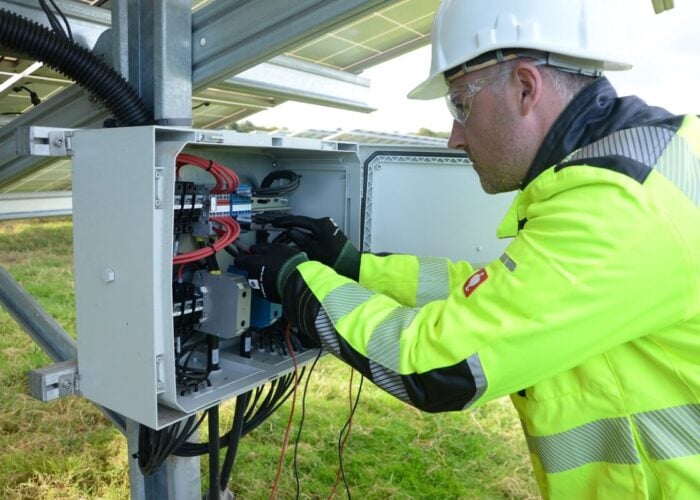
The Solar Stewardship Initiative (SSI) and the Copper Mark have signed an agreement to pursue “responsible production and sourcing of copper across the solar energy value chain”.
The SSI – established by trade bodies SolarPower Europe and Solar Energy UK as a self-policing body for solar PV supply chains and sustainability – said that as solar deployments increase, and copper usage within solar rises, “so too does the need for cooperation between key stakeholders in the copper value chain.”
Try Premium for just $1
- Full premium access for the first month at only $1
- Converts to an annual rate after 30 days unless cancelled
- Cancel anytime during the trial period
Premium Benefits
- Expert industry analysis and interviews
- Digital access to PV Tech Power journal
- Exclusive event discounts
Or get the full Premium subscription right away
Or continue reading this article for free
The two bodies signed a memorandum of understanding (MOU) with the ambition to map value chains, identify environmental, social and governance (ESG) risks and provide solutions to enhance sector-wide performance.
The Copper Mark is a supply and compliance assurance framework for the copper, molybdenum, nickel and zinc value chains.
Copper has long been a major component in solar transmission infrastructure and cables, and is increasingly becoming a significant part of solar PV cell fabrication. Standard processes rely heavily on silver as a conductive material in solar cells, but as manufacturing capacity grows and cell technology advances, the cost and scarcity of silver have begun to present problems.
Solar manufacturing is taking up a growing portion of global silver demand, and industry players are seeking ways to replace silver with copper, as PV Tech Premium recently discussed with Yongqian Wang, chief scientist at Chinese solar manufacturer AIKO.
The energy transition, led by solar manufacturing and grid expansion, will likely be a major contributor to growth in copper demand over the next decade, according to a recent report. Its authors, Wood Mackenzie, said that geopolitical pressures will accelerate the increase in copper demand from renewables, as nations seek to reduce reliance on imports.
“This collaboration with the Copper Mark is an important step towards building a truly integrated approach to responsible production in the solar value chain,” said Rachel Owens, CEO of the SSI.
“By connecting upstream and downstream assurance efforts, we can strengthen transparency and accountability from raw materials to finished solar products. Together, we aim to create stronger links between the metals and solar sectors ensuring that the rapid expansion of renewables is grounded in ethical, traceable, and sustainable supply chains.”
The SSI operates two assurance standards for the solar industry – the ESG and Supply Chain Traceability standards. The former focuses on ethical, sustainability, and governance practices and the latter seeks to track supply and raw materials throughout the solar supply chain. The schemes are voluntary and require manufacturers to submit themselves or specific factories to the SSI’s auditing process.
Earlier this year, PV Tech Premium spoke to the former head of the SSI, Alexia Ruvoletto, about its standards and the efficacy of industry-led compliance and assurance schemes.






